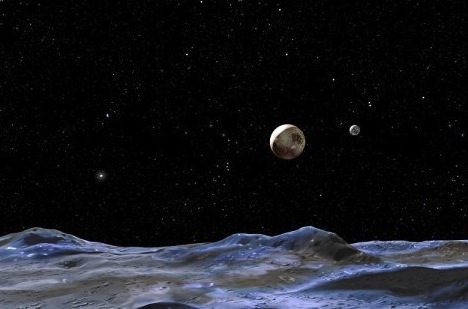If the icy surface of Pluto’s giant moon Charon is cracked, analysis of the fractures could reveal if its interior was warm, perhaps warm enough to have maintained a subterranean ocean of liquid water, according to a new NASA-funded study.
Pluto is the furthest planet from Sun in the Solar System. The distance from the Sun of Pluto is 29 times more than the Sun and the Earth. The Surface temperature of the Pluto is Minus 229 degree Celsius. The existence of the water at this temperature at the surface is impossible. However, the possibility of the underground Ocean in Charon cannot be ruled out on this issue. According to the scientists, every aspect has to be taken care of in the case of Charon. NASA is preparing to send Horizon Spacecraft to Pluto and Charon as well to understand more on the facts.
Alyssa Rhoden of NASA’s Goddard Space Flight Centre, who is investigating on the matter said, “Our model predicts different fracture patterns on the surface of Charon depending on the thickness of its surface ice, the structure of the moon’s interior and how easily it deforms, and how its orbit evolved.”
The Horizon Spacecraft would be launched in 2015. The Scientists are hopeful that the details and the predictions of the Charon would unveil the mystery about Charon. The details can very well point towards the fact that the Charon has underwater ocean of water in the past.
Agencies/Canadajournal
 Canada Journal – News of the World Articles and videos to bring you the biggest Canadian news stories from across the country every day
Canada Journal – News of the World Articles and videos to bring you the biggest Canadian news stories from across the country every day



